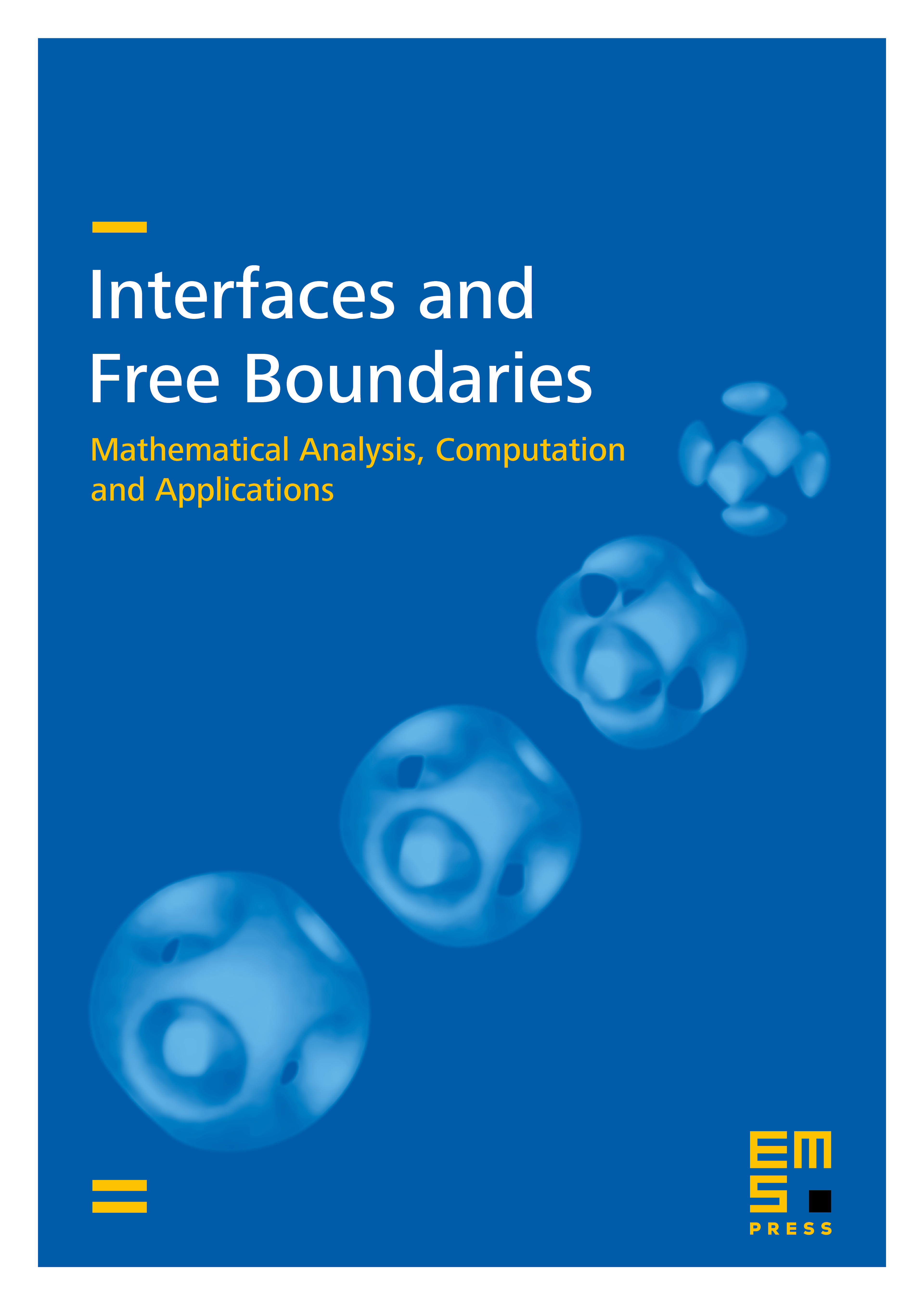Bubbles and droplets in a singular limit of the FitzHugh–Nagumo system
Chao-Nien Chen
National Tsing Hua University, Hsinchu, TaiwanYung-Sze Choi
University of Connecticut, Storrs, USAXiaofeng Ren
George Washington University, Washington, USA

Abstract
The FitzHugh–Nagumo system gives rise to a geometric variational problem, when its parameters take values in a particular range. A stationary set of the variational problem satisfies an Euler–Lagrange equation that involves the curvature of the boundary of the set and a nonlocal term that inhibits unlimited growth and spreading. The nonlocal term is the solution of a nonhomogeneous modified Helmholtz equation with the characteristic function of the stationary set as the inhomogeneous term. Two types of stationary sets are studied: disc shaped stationary sets in the plane, termed bubbles, and unions of perturbed small discs, termed droplet assemblies, in bounded domains. A complete description of the existence and the stability of bubbles is established. Depending on the parameters, there may be zero, one, two, or even three bubbles. Droplet assemblies are constructed by a reduction argument. Each droplet in a stationary assembly is close in size and shape to the corresponding bubble in the plane. The locations of the droplets in the assembly are determined by the Green’s function of the modified Helmholtz equation.
Cite this article
Chao-Nien Chen, Yung-Sze Choi, Xiaofeng Ren, Bubbles and droplets in a singular limit of the FitzHugh–Nagumo system. Interfaces Free Bound. 20 (2018), no. 2, pp. 165–210
DOI 10.4171/IFB/400